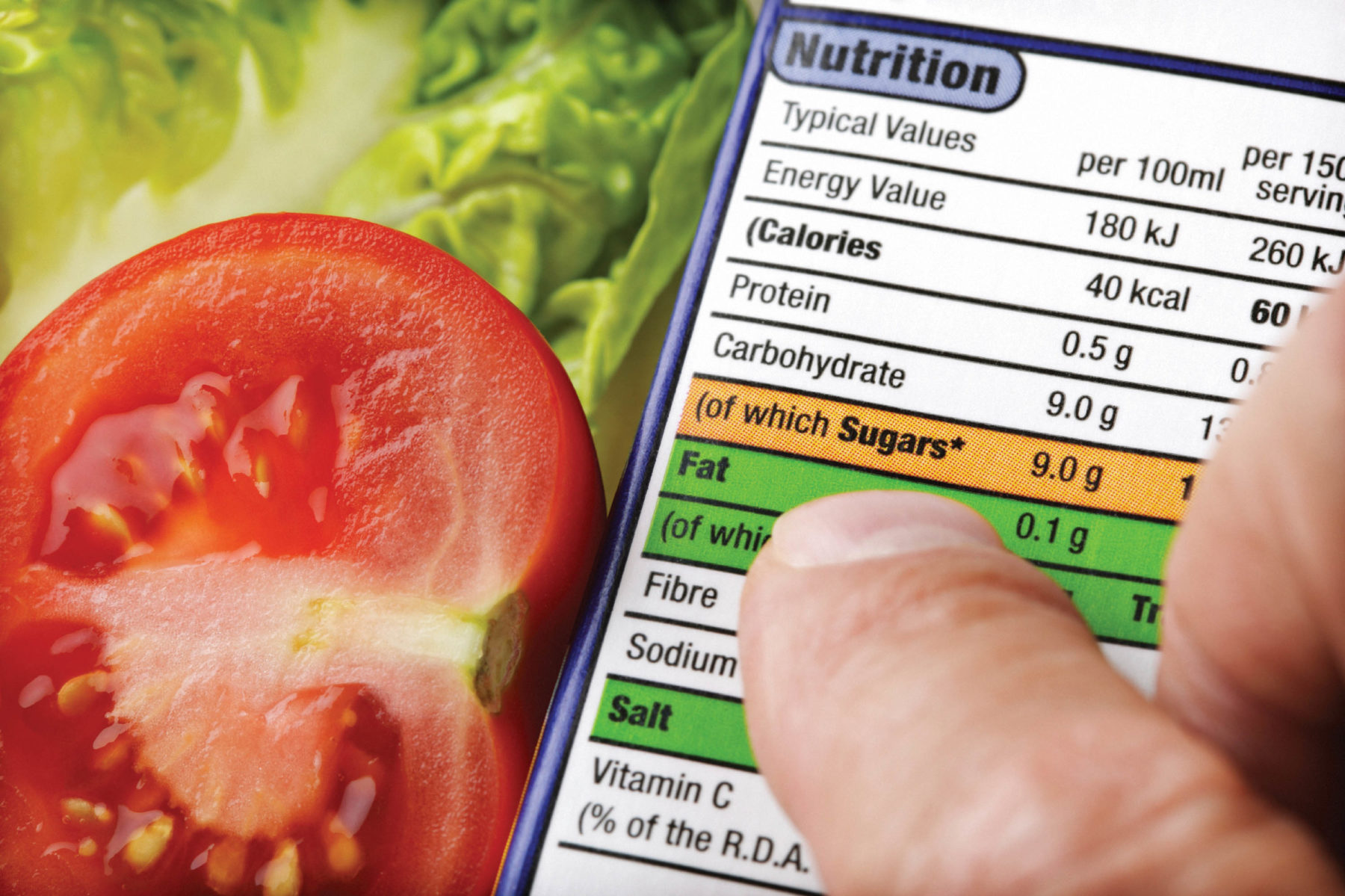12 Tips to Understanding a Nutrition Label

Learning how to read a food label is one of the best ways to ensure the food you are consuming meets the needs and goals of your body. You may have had nutrition experts and coaches encourage you to “read the label” when choosing foods, but that can be a confusing and misleading method for food choice.
Why? The claims and labeling on a food item, though they may be true, do not tell the whole truth. Knowing what to look for, what to read and what to ignore will set you up on a path for successful eating for your body. Here are some pro tips for reading a food label:

- Be wary of what you read on the front of a label. Notices like gluten-free, no added sugars, low-fat or whole grain may be misleading or plain uninformative. For example, a container of applesauce that declares gluten-free isn’t informative, since gluten is a protein produced by wheat, and applesauce is (hopefully) just apples. A “no added sugars” label does not guarantee the item is low in sugar. Low-fat foods may not be low-calorie, as sugar tends to be the substitute when lowering fat. And whole grain just means there are whole grains in the ingredients, but you should still make sure that it is the first ingredient and unprocessed.
- Read the ingredients list first. Are the ingredients listed ones you would expect the product to contain? Can you read and pronounce each item listed? Are there any items that you are not sure what they are included for? Preservatives, added sweetener, indigestible fiber or food coloring? If there is anything on the ingredients list you do not want in your body, this is the first way to identify and discard this food choice.
- Look at the Nutrition Facts. Look at the serving size and calories associated with it. Is the serving size realistic, especially for the number of calories that are going to be consumed?
- Check the number of servings per container. It is possible the label on a drink claims 180 calories per serving, but the bottle contains 2.5 servings. If the label goes unchecked, you may end up consuming 450 calories when you thought you were only consuming 180.
- How much and what kind of fat? Fat is calculated at 9 calories per gram. Look at the total fat per serving and the types of fat that are present. The percentage of calories based on the fat content of a low-fat food should be around 2% or lower (think 2 grams of fat for every 100 calories). Saturated fats, unsaturated fats and trans fats are all different. Saturated fats are solid at room temperature, and it is usually found from animal sources. Unsaturated fats are liquid at room temperature and generally come from plant sources. Trans fat is a fat changed by hydrogenation to increase the shelf life of food. Trans fat can lead to increased cholesterol levels and should be avoided when possible.
- Understand how sodium is measured. Sodium is measured in grams and as the percentage of daily intake. That daily intake percentage is based on a government standard that may be higher than your health goals. As a rule, it would be ideal that the number of milligrams of sodium was less than the number of calories per serving. A daily goal may be to keep sodium under 1800 milligrams per day.
- Different types of carbohydrates. Carbs are an important part of a healthy nutrition plan, coming in at 4 calories per gram. Understanding the number of carbohydrates desired in a day as well as the type of carbohydrates can either keep you on track or derail your plan completely.
- What kind of sugar? They come in two forms: sugars that occur naturally and sugars that are added. In many foods, naturally occurring sugars are to be expected, especially if there are fruits in the food. Added sugars add extra calories to the food and inches to your waistline.
- Know where the fiber is coming from. Fiber is found in grains and fruits but can also be chemically added to foods. Ideally, indigestible fibers help to keep the body fuller longer as well as assist with removing waste from the digestive tract. Chemically enhanced fiber can be marked as indigestible fiber, because technically they cannot be digested but do little to no help with waste removal.
- Have no fear of protein. Protein is the easiest and most straightforward macronutrient listed on the nutrition fact sheet. At 4 calories per gram, it is easy to calculate and keep track of protein consumption goals.
- What’s with all the (or lack of) vitamins? Vitamins and minerals are an important part of the foods we consume daily. Vitamins are organic and found naturally in plant and animal sources. Minerals are inorganic and found in soil and water which are absorbed by plants and animals. There are up to 14 vitamins and 14 minerals that can be listed. Some are naturally occurring from the ingredients, and others may be fortified to meet population deficiencies.
- Trust your gut. If something doesn’t seem right or you just aren’t sure if that food fits into your goals, don’t consume it.
Reading the food label is a great way to assist with keeping food intake in line with your goals. When in doubt, leave it out. With just a little understanding, the confusing and daunting label becomes your best friend when planning out your meals!
About the Author

Coach Kati Epps is the founder of MyBody GX with a background in chemistry from Colorado State University, an ACE certified personal trainer, health coach and nutrition specialist.






